In a Bentley Bentayga, there are more than 90 electronic control units secreted within, besides the powertrain, the air suspension and its anti-roll systems and a cooling pack that can cope with a W12 and four fat wheels threshing through sand in 40deg C temperatures.
Clips, conduits and clamps, ducts, sound dampers and seals – these are just some of the myriad parts that locate, cement, energise and cool the clusters of components that make up the unseen innards of your car.
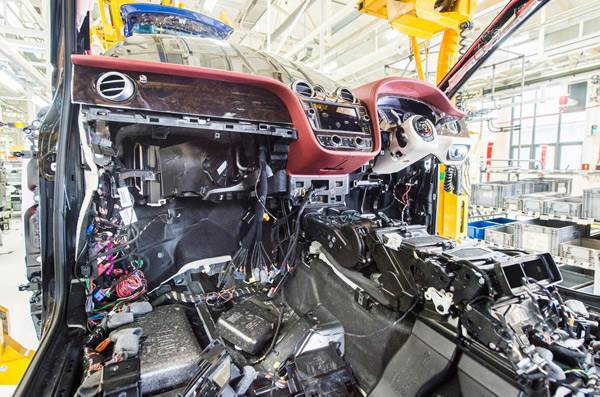
In a designer’s world, these components are the car’s ‘B-side’, the flipside of the panels that clothe it to provide a visual character. Designing the A-side is challenging enough. A car’s shape does much to determine its likely success, which is why the design process is invested with so much time, effort, agonising and inspiration.
The B-side is all about realising the car’s function and the engineering of everything from a draught excluder to a differential. There are aerodynamics, crash performance and passenger packaging to consider, besides the reams of rules around light location, bumper heights, internal projections and pretty much every other aspect of a car’s essence.
At least as difficult is to plan the three-dimensional world beneath the car’s skin. The Bentayga may be big, but you only have to glance at the cutaway below to see that every nook, cranny, crevice and orifice that isn’t given over to occupants and their belongings is ram-packed with stuff. Fitting them all in so they live a reliable, interference-free life within an envelope largely dictated by the design department is a massive challenge. How it’s done is what we’re here to discover.
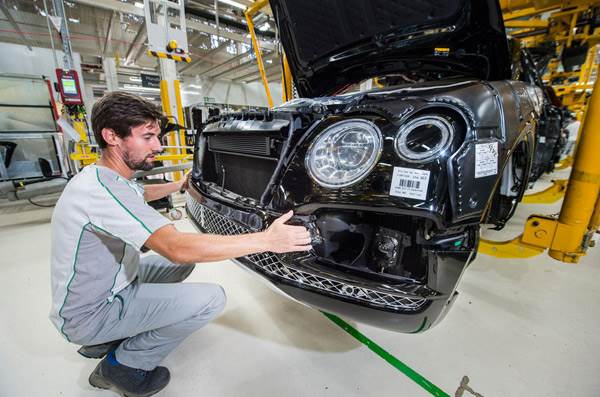
All the cutaways you see here are stills taken from a session in what Bentley calls the visualisation room. Simon Blake, Bentley’s director of body and trim engineering, explains that during a car’s development there are meetings here “every Wednesday afternoon for two and a half hours”. There were no fewer than 79 sessions during the Bentayga’s gestation, besides what he calls the “drumbeat” of collective development and minor reviews.
They’re called forums, and the room in which they’re held is indeed quite Roman in some of its arrangements, the rising rows of seats creating an amphitheatre. What the Romans wouldn’t have had, of course, was a projection screen big enough to turn a headlight into an object taller than a human.
The screen is 28 metres square and projects a staggering 8.8 million pixels of image that require a still more staggering three billion bytes of data. Around 15,000 metres of cable and 10,000 watts are required to bring it to life, with astounding resolution and accuracy.

You might think that designing a radiator grille for any car, Bentley included, would be relatively simple. It needs to ingest air, of course, and in this case its traditional decorative mesh is framed by a body-coloured shell bearing the winged Bentley badge.
But there’s a lot more to a grille than the harvesting of air for cooling and boldly announcing the car’s identity. There is, as Nick Game, Bentley’s functional manager for bumper systems, explains, “legislation input”, namely regulation R127, which defines pedestrian protection requirements for the head and legs of adults and children.
“Certain zones must comply,” he says. “We take the digital surface, define the zone layout test area [the impact areas of bumper and bonnet] and find the hard points. It affects many components, including the powertrain.”
In this case, that means part of the cooling system. CAD models that simulate pedestrian head and leg impacts reveal the need for a change that could affect the car’s styling. Which is where the weekly forums — and the visualisation screen — come into their own. The vast power of this technology allows the designers and engineers to plunge below the Bentley’s surface and see an air intake and the confined space it occupies behind the grille. The intake bears part of the impact of a pedestrian and needs to crush in a way that both absorbs energy and prevents serious damage to legs.
“There’s a maximum allowable bending of the leg to protect the knee joint, and it was being exceeded,” explains Game.
The suggested solution was to redesign a horizontal plastic air intake duct located at the top of the grille behind the mesh and the radiator shell, in order to “provide more structure and suppress the upper leg”. There’s a lot of energy to suppress, too, the average leg delivering a concentrated 13kg impact at 25mph. “It’s a change that can alter the look of the car,” says Game.
Front wing
The space behind the front wing of a car is a surprisingly busy one, as this cutaway reveals. The B-side of a front wing doesn’t have to look pretty, but it’s a zone that needs some pretty elegant engineering solutions in order to perform all its functions. One of the most obvious is to house the wheel and tyre without allowing them to strike the bodywork at full lock or full suspension compression. It’s why the void inside a wing is considerable, especially on a car that can wear 22in rims.
Despite this, the wheel isn’t the most difficult thing to accommodate. “The lights produce the biggest challenge because there’s so much going on,” says Marshfield. “It constrains the shape of the car because there’s so much underneath.”

The first step is to “determine the wheel envelope as a 3D package”, from which the wheel arch liner is developed. “Then comes the battle for space,” says Marshfield. There’s plenty to pack in, from washer bottle and its pipes to the air springs, suspension uprights, a bracing strut linking bumper mounts to inner wing and those sizeable headlight pods. “But style is king,” adds Marshfield, pointing out another spatial battle in the form of a chrome wing vent living close to the washer bottle.
Front bumper
The apparently simple task of jointing front bumper to grille turned out to be a challenge, with a 0.1-0.5mm variation in the step where the parts met being too visible. It took six weeks to build a model to understand the problem, with Marshfield deciding to move the bumper back to get an underflush that hides the variation. “It looks flush,” he says, “but actually it’s not.” It’s a tiny detail that absorbed plenty of time.

Header rail
The header rail is the reinforced side section of the car’s roof. If you’re sitting behind the wheel, it will be sitting top right behind the headlining, out of sight and out of mind. It contains no mechanisms other than curtain airbags, yet as this cutaway illustrates, there are many layers to it, a colony of rubber seals, the guide channels for the glass roof and the aluminium roof rails. Even these are double-skinned like the steel header rail itself, which must be stout enough to sustain the cabin in a rollover.
The seals have a vital job beyond excluding dust and water, with their shape, location and compound designed to minimise the roar of a sizeable SUV beating a path through the air.

The doors that seal against the header can be a source of creaks and rattles, with a so-called ‘clash detection team’ assigned to addressing them. “Knowing the stiffness of the neighbouring parts means you can predict the risk of a rattle being generated,” explains Jonathan Layfield, head of whole vehicle physics.
Areas like this are known as grey zones, the bits between the inside and outside of a car. But even though they’re hardly a car’s visual signature, the design department casts an eye over areas such as the A-pillars, door hinges and the underbonnet sound-deadening quilt. “When you open the bonnet, it’s got to look good,” says Blake.
Dashboard B-side
This is the side of a dashboard that most owners will never see. With this rear view, you can see how it’s mounted to the bulkhead and a substantial crossbrace, with part of the air conditioning and an alloy support for the steering column also visible. The wiring is absent from this image for clarity (there’s a lot of it in a car this complex), while the aperture for the head-up display projection is visible at the rear of the instrument binnacle.
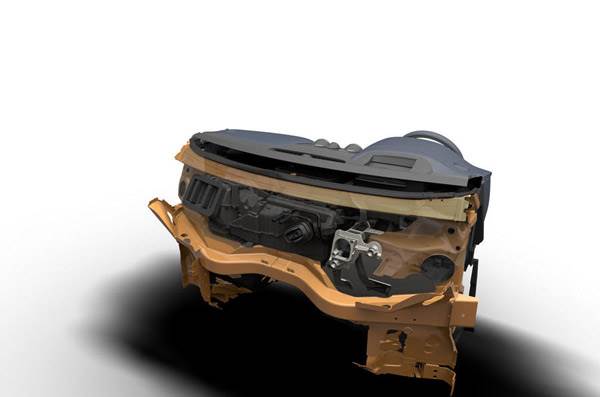
Installing the dashboard is one of the more complex processes in car assembly, and working out how this procedure will work on an assembly line is still more challenging.
“We do it in a virtual context with a virtual build presenting a glide path of the components being assembled,” says Alaa El-Shanti, Bentley’s pre-series centre manager.
Headlight cluster
The dense pixel population of the visualisation screen allows details to be hugely expanded. Projected on the screen, a headlight cluster’s lenses are taller than a human. You’ll never see it that big in reality, of course, but the screen’s incredible resolution allows the designers to tighten gaps and put more precision into parts. It also opens up the scope for cost reduction, not least in the time saved to develop the car.

“You could design the car without this equipment,” says pre-series centre manager Alaa El-Shanti. “But it would take much longer: 54 months rather than 48.”

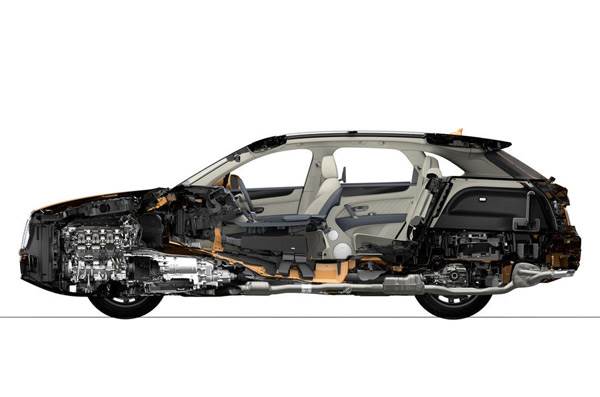
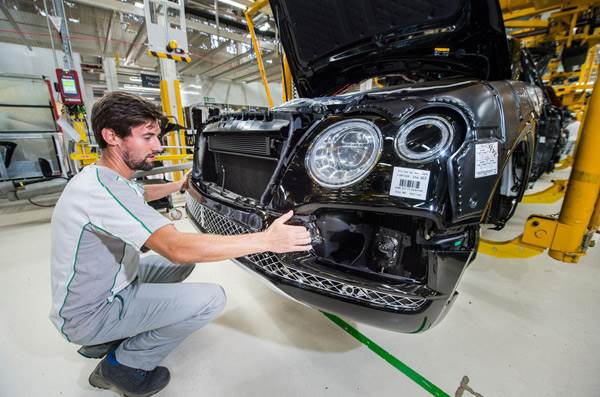

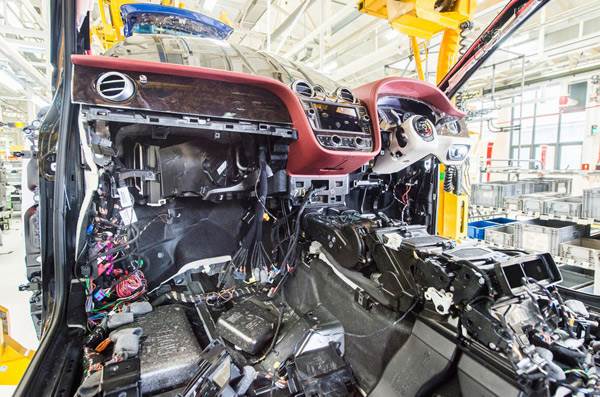


Comments
Member Login
Personal Details
No comments yet. Be the first to comment.